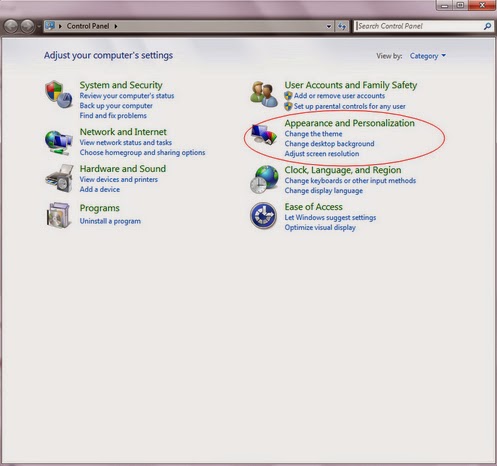General introduction about UNIDeaLsa 2.0 :
UNIDeaLsa 2.0 is a browser extension that displays various advertisements.UNIDeaLsa 2.0 is harmful as it is created by cyber crooks to access Internet user’s computers aiming at ruining the operating system and pilfering useful information from computer users. After UNIDeaLsa 2.0 gets inside your computer successfully, it has the ability to attack all the web browsers like Internet Explorer, Firefox and Google Chrome which you have installed in your computer.
Some adjustments about your default browser settings may be made by UNIDeaLsa 2.0 without any approval, for instance, UNIDeaLsa 2.0 will insert many useless and harmful extensions for better achieving its promotion purpose. It is no doubt that you may suffer nonstop pop-up created by UNIDeaLsa 2.0 as time goes by. Moreover, UNIDeaLsa 2.0 consists of several functions that may put your system at risk.
Designed specifically by cyber criminal, UNIDeaLsa 2.0 is able to gather valuable information from the compromised PC. UNIDeaLsa 2.0 will add harmful cookies and extensions to your browsers to track your online activities and collect information like telephone numbers, usernames, log in account, passwords, and other sensitive data that manually submitted into online forms, and then send the stolen info to the remoter hacker to use for illegal purposes.
Video Guide to Get Rid of Infections Like UNIDeaLsa 2.0:
Step by Step Instruction to Remove UNIDeaLsa 2.0:
Method one: Manually get rid of UNIDeaLsa 2.0 from your computer
Method two: Automatically remove UNIDeaLsa 2.0 with antivirus software SpyHunter
Method one: Manually get rid of UNIDeaLsa 2.0 from your computer
Step one: Delete PUP programs added by UNIDeaLsa 2.0 from computer using control panel
For Windows 7/Vista: Click “Start” (“Windows Logo”)>”Control Panel“>”Uninstall a program“(under Program)>look for any dubious programs, select them and click Uninstall/Change.

For Windows 8: Right-click on the screen’s bottom-left corner> “Control Panel” >”Uninstall a program“(under Program)> Look for any dubious programs, select them and click Uninstall/Change.

Step two: Remove suspious browsers add-ons added by UNIDeaLsa 2.0
Internet Explorer: Open Internet Explorer, go ‘Tools‘ -> ”Manage Add-ons’ -> ‘Toolbars and Extensions’. Here, look for UNIDeaLsa 2.0 and other suspicious ones and then click 'uninstall'. Now open IE once again and click Tools -> Internet Option -> General tab. Enter Google or other address to make it the default start page.
Mozilla Firefox: Open Mozilla Firefox, go ‘Tools’ -> ‘Add-ons’ -> ‘Extensions’. Find UNIDeaLsa 2.0 and other suspicious ones and then click ‘Uninstall’. Now open Mozilla Firefox once more, go to Tools -> Options -> General -> Startup and select 'Show a blank page' when Firefox Starts or set a certain website, like Google or similar.
Google Chrome: Open Google Chrome, click on wench icon, go to settings and choose 'Manage search engines'. Change search engine to google or other and delete UNIDeaLsa 2.0 and other suspicious ones from the list. Then Go to section “On start” and make sure you get blank page while creating new tab.
Step three: show hidden files and folders and delete harmful files of Spns.seriousads.net
Guide: click the Start button and choose Control Panel, clicking Appearance and Personalization, to find Folder Options then double-click on it. In the pop-up dialog box, click the View tab and uncheck Hide protected operating system files (Recommended).

Delete all the following files:
%AllUsersProfile%\{random.exe\
%AllUsersProfile%\Application Data\
%AllUsersProfile%\random.exe
%AppData%\Roaming\Microsoft\Windows\Templates\random.exe
%Temp%\random.exe
%AllUsersProfile%\Application Data\random
Step four: open Registry Editor to delete all the registries added by Spns.seriousads.net
Guide: open Registry Editor by pressing Window+R keys together.(another way is clicking on the Start button and choosing Run option, then typing into Regedit and pressing Enter.)

Delete all the vicious registries as below:
HKEY_CURRENT_USER\Software\Microsoft\Windows\CurrentVersion\Uninstall\ BrowserSafeguard \ShortcutPath “%AppData%\[RANDOM CHARACTERS]\[RANDOM CHARACTERS].exe” -u
HKEY_CURRENT_USER\Software\Microsoft\Windows\CurrentVersion\Run “.exe”
HKCU\Software\Microsoft\Windows\CurrentVersion\Internet Settings\random
HKEY_LOCAL_MACHINE\SOFTWARE\Microsoft\Windows\CurrentVersion\run\random
HKEY_CURRENT_USER\Software\Microsoft\Windows\CurrentVersion\Internet Settings “CertificateRevocation” = ’0
(You may need expert skills to figure out relevant files and entries created by UNIDeaLsa 2.0 in case that you can’t directly erase the pop-ups by resetting browsers. If you fail to fix the issue manually, please feel free to start an automatic removal with SpyHunter.)
Method two: Remove UNIDeaLsa 2.0 from PC using SpyHunter
To remove UNIDeaLsa 2.0 from your PCs, it is recommended to Download and install SpyHunter to detect and remove UNIDeaLsa 2.0. SpyHunter is a program that searches for and deletes Adware, Toolbars, and browser Hijackers from your computer. By using SpyHunter you can easily remove many of these types of programs for a better user experience on your computer and while browsing the web.Step 1. Download SpyHunter by clicking the following download link:
Step 2. Double-click on the downloaded file. If asked to allow program to make changes to this computer, click “Yes” button.

Step 3. In this step, please accept the Licence Agreement and click “Next >” button.

Step 4. After the definition database is downloaded, system scan will automatically start.
.jpg)
Step 5. Remove UNIDeaLsa 2.0 and all other threats detected by SpyHunter.
Kindly reminder:
The random names used by UNIDeaLsa 2.0 multiply the difficulties of manual removal. If you do not have any virus manual removal experience, it is recommended you choose the automatic removal method. Download and install SpyHunter - the famous antivirus software here to get rid of UNIDeaLsa 2.0 completely now. Also, it is suggested that you scan your system regularly with SpyHunter to prevent instruction of any computer infections.


No comments:
Post a Comment
Note: Only a member of this blog may post a comment.